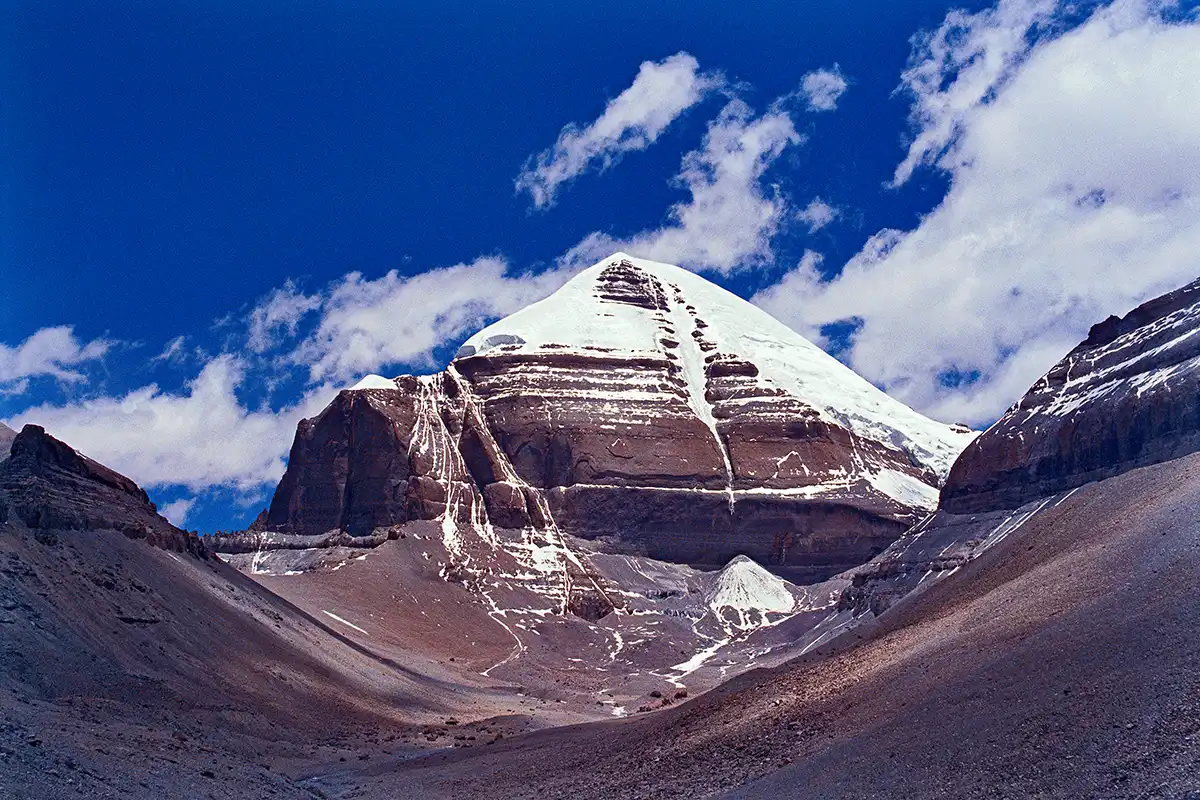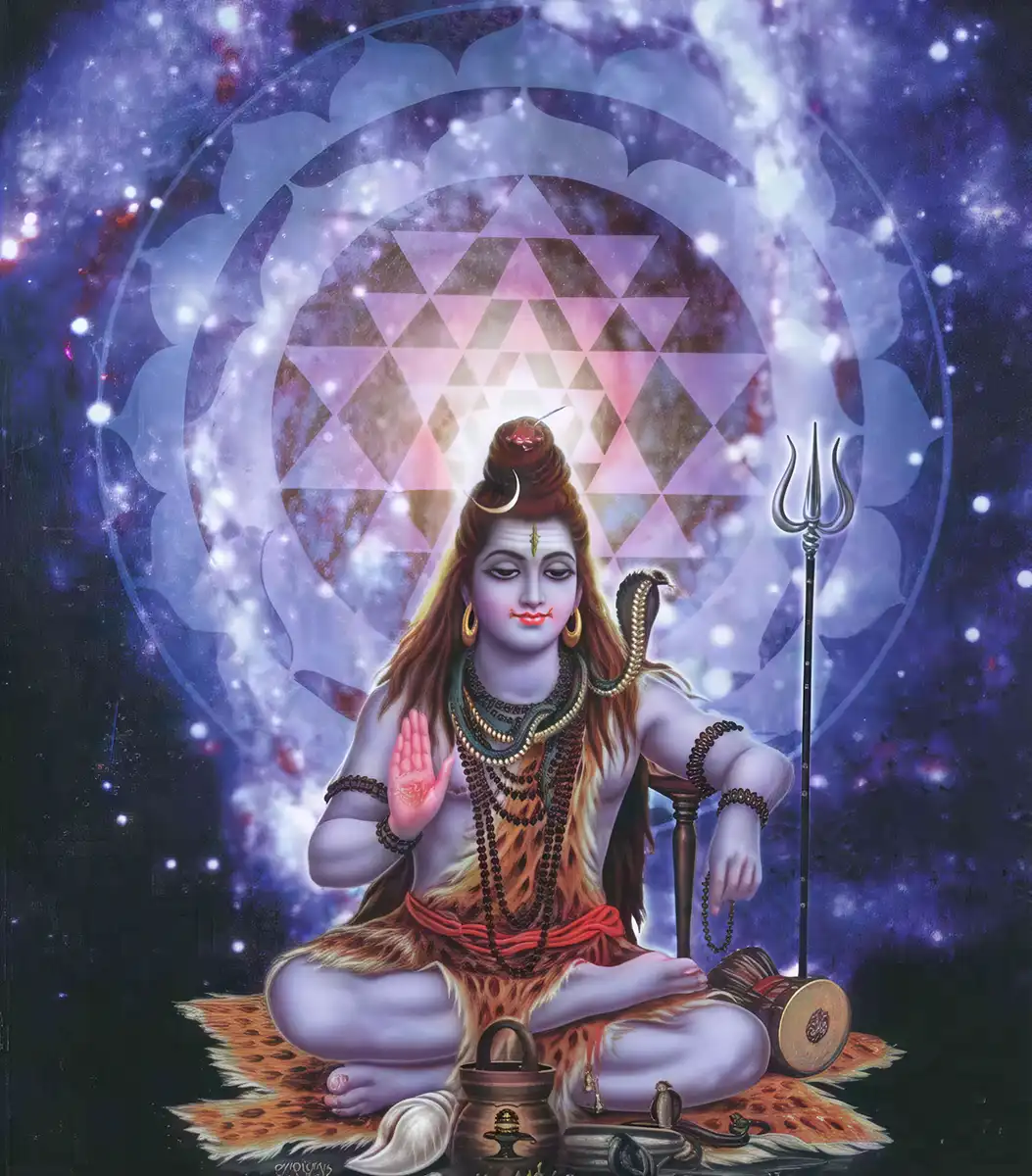Mount Kailash
A great mass of black rock soaring to over 22,000 feet, Mount Kailash is notable for being one of the world's most venerated holy places at the same time that it is one of the least visited. The supremely sacred site of four religions and billions of people, Kailash is seen by no more than a few thousand pilgrims each year. This curious fact is explained by the mountain's remote location in far western Tibet. No planes, trains, or buses journey anywhere near the region, and even with rugged over-land vehicles, the journey still requires weeks of difficult, often dangerous travel (though this is changing as the Chinese occupiers of Tibet build roads and railways across the vast reaches of the country). The weather, always cold, can be unexpectedly treacherous, and pilgrims must carry all the supplies they will need for the entire journey.
How long have people been coming to this sacred mountain? The answers are lost in antiquity, before the dawn of Hinduism, Jainism, or Buddhism. The cosmologies and origin myths of each of these religions speak of Kailash as the mythical Mount Meru, the Axis Mundi, the center and birthplace of the entire world. The mountain was legendary before the great Hindu epics, the Ramayana and the Mahabharata, were written. Indeed, Kailash is so deeply embedded in ancient Asian myths that it was perhaps a sacred place of another era, another civilization, now long gone and forgotten.
Hindus believe Mount Kailash to be the abode of Lord Shiva. Like many Hindu gods, Shiva is a character of apparent contradictions. He is at once the Lord of Yoga and, therefore, the ultimate renunciate ascetic, yet he is also the divine master of Tantra. This esoteric science regards sexual union as the perfect path to spiritual enlightenment. According to legend, immortal Shiva lives atop Kailash, where he practices yogic austerities, makes joyous love with his divine consort, Parvati, and smokes ganja, the sacred herb known in the West as marijuana. Hindus do not interpret Shiva's behaviors as contradictory but rather see in him a deity who has wisely integrated the extremes of human nature and thus transcended attachment to any particular and limited way of being. For a Hindu, to make the arduous pilgrimage to Kailash and have the darshan (divine view) of Shiva's abode is to attain release from ignorance and delusion.
Kailash is sacred to other religions as well. The Jains call the mountain Astapada and believe it to be where Rishaba, the first of the twenty-four Tirthankaras, attained liberation. Followers of Bon, Tibet's pre-Buddhist, shamanistic religion, call the mountain Tise and believe it to be the seat of the Sky Goddess Sipaimen. Additionally, Bon myths regard Tise as the sight of a legendary 12th-century battle of sorcery between the Buddhist sage Milarepa and the Bon shaman Naro Bon-chung. Milarepa's defeat of the shaman displaced Bon as the primary religion of Tibet, firmly establishing Buddhism in its place.
While the Buddha is believed to have magically visited Kailash in the 5th century BC, the religion of Buddhism only entered Tibet via Nepal and India in the 7th century AD. Tibetan Buddhists call the mountain Kang Rimpoche the 'Precious One of Glacial Snow' and regard it as the dwelling place of Demchog (also known as Chakrasamvara) and his consort, Dorje Phagmo. Three hills rising near Kang Rimpoche are believed to be the homes of the Bodhisattvas Manjushri, Vajrapani, and Avalokiteshvara.
After the difficult journey getting to Kailash, pilgrims are then confronted with the equally arduous task of circumambulating the sacred peak on foot. Walking around the mountain (clockwise for the Buddhists, counter-clockwise for Bon adherents) is known as a Kora, or Parikrama, and usually takes three days. In hopes of gaining extra merit or psychic powers, however, some pilgrims will vary the tempo of their movement. A hardy few, practicing a secret breathing technique known as Lung-gom, will power themselves around the mountain in only one day. Others will take two to three weeks for the Kora, doing full-body prostrations the entire way.
It is believed that a pilgrim who completes 108 journeys around the mountain is assured enlightenment. Most pilgrims to Mount Kailash will also take a short plunge in nearby sacred Lake Manosaravar. The word 'manas' means mind or consciousness; the name Manosaravar means Lake of Consciousness and Enlightenment. Adjacent to Manosaravar is Rakas Tal or Rakshas, the Lake of Demons. Pilgrimage to this great sacred mountain and these two magical lakes is a life changing experience and an opportunity to view some of the most magical scenery on the planet.
Sacred Visions: Early Paintings from Central Tibet
http://www.metmuseum.org/research/metpublications/Sacred_Visions...

Martin Gray is a cultural anthropologist, writer and photographer specializing in the study of pilgrimage traditions and sacred sites around the world. During a 40 year period he has visited more than 2000 pilgrimage places in 160 countries. The World Pilgrimage Guide at sacredsites.com is the most comprehensive source of information on this subject.


